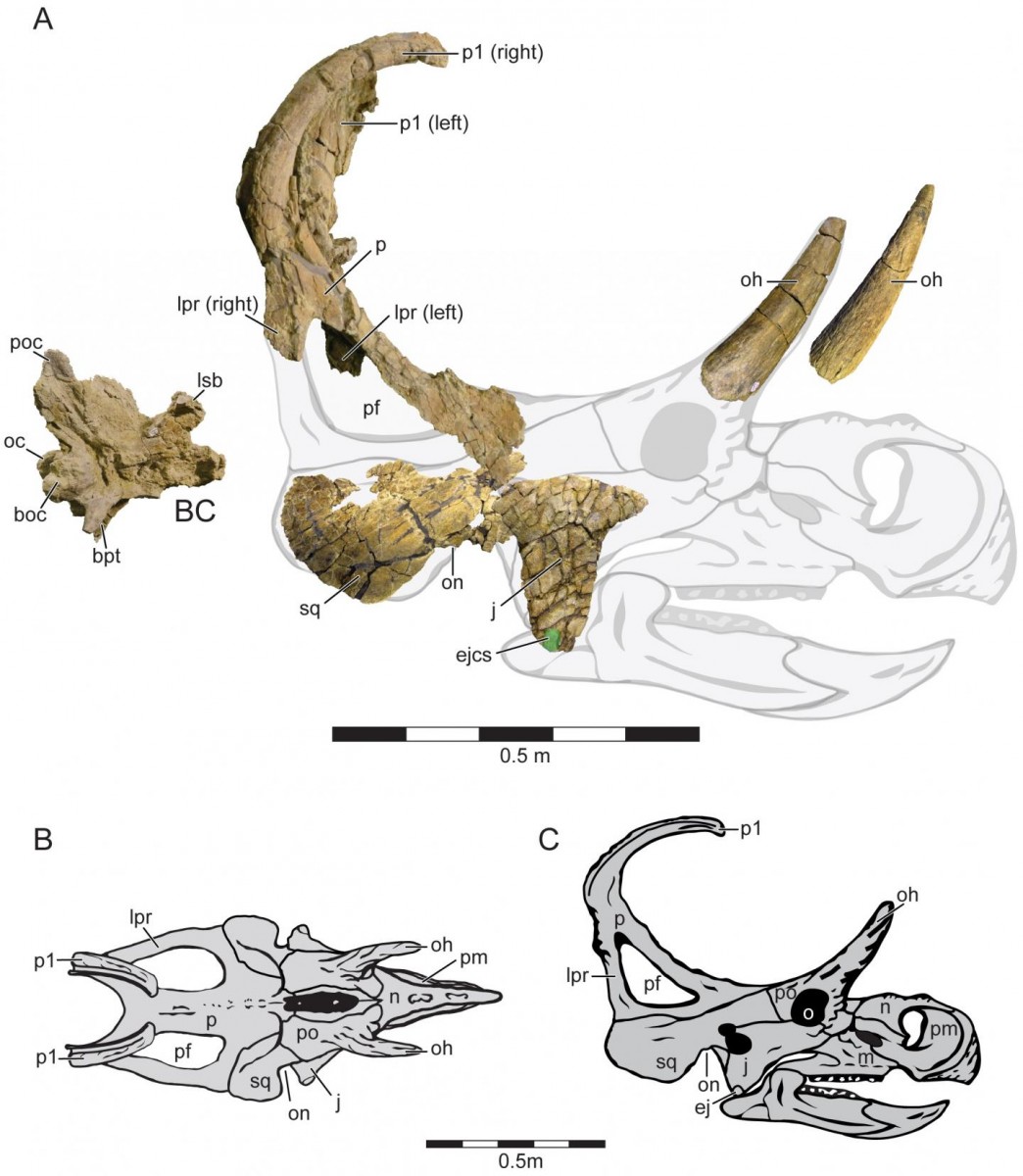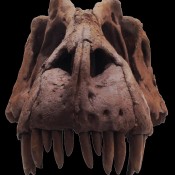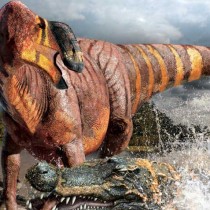A new horned dinosaur discovered in Utah had two spikes projecting from the back of its neck shield, according to a study published May 18, 2016 in the open-access journal PLOS ONE by Eric Lund from the Ohio University Heritage College of Osteopathic Medicine, US, and colleagues.
Centrosaurines, a subfamily of ceratopsids (large horned dinosaurs), lived in the final stages of the age of dinosaurs in what is now western North America. They had distinctive parrot-like beaks, enlarged noses, facial horns, and ornamented frills (neck shields). Many centrosaurine fossils have been discovered from the northern part of this continent, but relatively few have been recovered from the southern portion, which includes modern-day Utah.
The authors of the present study examined skull fossils found in the Wahweap Formation in Grand Staircase-Escalante National Monument in southern Utah. Comparison with other centrosaurines revealed that this was a new species, named Machairoceratops cronusi. The dinosaur, which lived around 77 million years ago, may have been 6-8 meters long and weighed up to 1-2 tons.
Eric Lund notes: “Machairoceratops is unique in possessing two large, forward-curving spikes off of the back of the neck shield, each of which is marked by a peculiar sulcus or channel extending from the base of the spike to the tip, the function of which is currently unknown.”
The discovery of this species with its unique frill ornamentation increases the known diversity of centrosaurines from southern Laramidia. The new fossils may also narrow a gap in the fossil record that spans nearly 4 million years and may provide important insights into the early evolutionary history of horned dinosaurs in the region.
Fig.: Holotype cranial Material and Cranial Reconstruction of Machairoceratops cronusi (UMNH VP 20550) gen. et sp. nov.
Recovered cranial elements of Machairoceratops in right-lateral view, shown overlain on a ghosted cranial reconstruction (A). The jugal, squamosal and braincase are all photo-reversed for reconstruction purposes. Machairoceratops cranial reconstruction in dorsal (B), and right-lateral (C) views. Green circle overlain on the ventral apex of the jugal highlights the size of the epijugal contact scar (ejcs).
Abbreviations: BC, braincase; boc, basioccipital; bpt, basipterygoid process; ej, epijugal; ejcs, epijugal contact scar; j, jugal; lpr, lateral parietal ramus; lsb, laterosphenoid buttress; m, maxilla; n, nasal; o, orbit, oc, occipital condyle;oh, orbital horn; on, otic notch; p, parietal; pf, parietal fenestra; pm, premaxilla; po, postorbital; poc, paroccipital process; p1, epiparietal locus p1; sq, squamosal.
Scale bars = 0.5 m.




